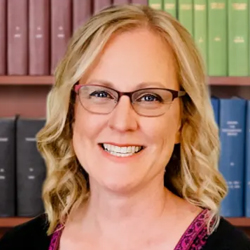
Videos & Webinars
Strategic Shorts: Facilitating Large-scale Collaboration by Considering a Merger
Strategies for enhancing collaborative efforts through mergers.

Core Essential 3-President-Board Chair Partnership
Wise boards know the relationship between the school president and board chair is mission-critical.

Videos & Webinars
Strategic Shorts: Turning Capacity Building into Compelling Grant Proposals
Pursuing large-scale grants that advance the mission and drive transformation.

Videos & Webinars
Redeeming Conflict One Tough Conversation at a Time
Conflict can either divide or strengthen institutions, offering a framework and practical strategies for constructive dialogue.

Podcast
Ep. 87: The burden of leadership in theological schools
What does it take to lead a theological institution today? Auburn Seminary is relaunching Auburn Studies, beginning with a valuable report on leadership. In this episode, the Rev. Dr. Patrick Reyes, dean of Auburn Seminary, shares key trends in the field, and study author, the Very Rev. Dr. Michael DeLashmutt of General Theological Seminary, explains what his research uncovered.

Podcast
Ep. 86: Cultivating generosity in givers and theological education
Dr. Rebekah Burch Basinger sees fundraising as a vital ministry that can shape faith and fuel the work of theological education. An expert in fundraising, Basinger revisits her book "Growing Givers' Hearts" on its 25th anniversary and explores the power of generosity, breaking the scarcity mindset and embracing God’s abundance. She shares insights from her research, offering practical wisdom for boards, presidents, and leaders to treat fundraising as an expression of faith. Learn how theological schools can inspire donors, strengthen financial health, and model a spirit of generosity that transforms future church leaders.

Core Essential 4-Balanced Budgets Fundraising Goals
Budget balancing is a challenging process that requires oversight.

Podcast
Ep. 85 - The State of Theological Education in 2025
Theological schools across North America are at a pivotal moment. In this episode, Rev. Frank Yamada, Ph.D., executive director of the Association of Theological Schools, and Amy Kardash, president of the In Trust Center for Theological Schools, discuss both the challenges and opportunities shaping the future of theological education.

Podcast
Ep. 84 - Engaging innovation and AI in theological education
Acadia Divinity College in Canada has been experimenting with AI and exploring the future of theological education and the church. The Rev. Anna Robbins, Ph.D., discusses what the school has done (including offering an AI-developed class) and describes AI's moment in history as akin to the printing press because of its transformative nature. She considers the mission of theological schools, the accessibility of AI, and how schools might preserve human connection and formation.

Podcast
Ep. 83: A misalignment in theological schools – and a way forward
Research by scholars at the Association of Theological Schools suggests a misalignment between how students in theological schools are being trained and what the workforce needs. Dr. Deborah Gin and the Rev. Dr. Jo Ann Deasy of ATS explain the research, the misalignments, and ways that schools can move forward to better prepare students.

Podcast
Ep. 82: Lilly Endowment's expanded Pathways Initiative
Lilly Endowment Inc.’s expanded Pathways for Tomorrow initiative will offer up to $325 million to help theological schools accredited by the Association for Theological Schools collaborate and innovate. The Rev. Dr. Jo Ann Deasy of ATS, who oversees the Pathways coordination work, offers insights on what Pathways has accomplished so far and what could be ahead.

Top 10 Questions When Merging
Consider these top 10 questions that trustees, presidents, and CFOs should ask each other and themselves when first considering a merger